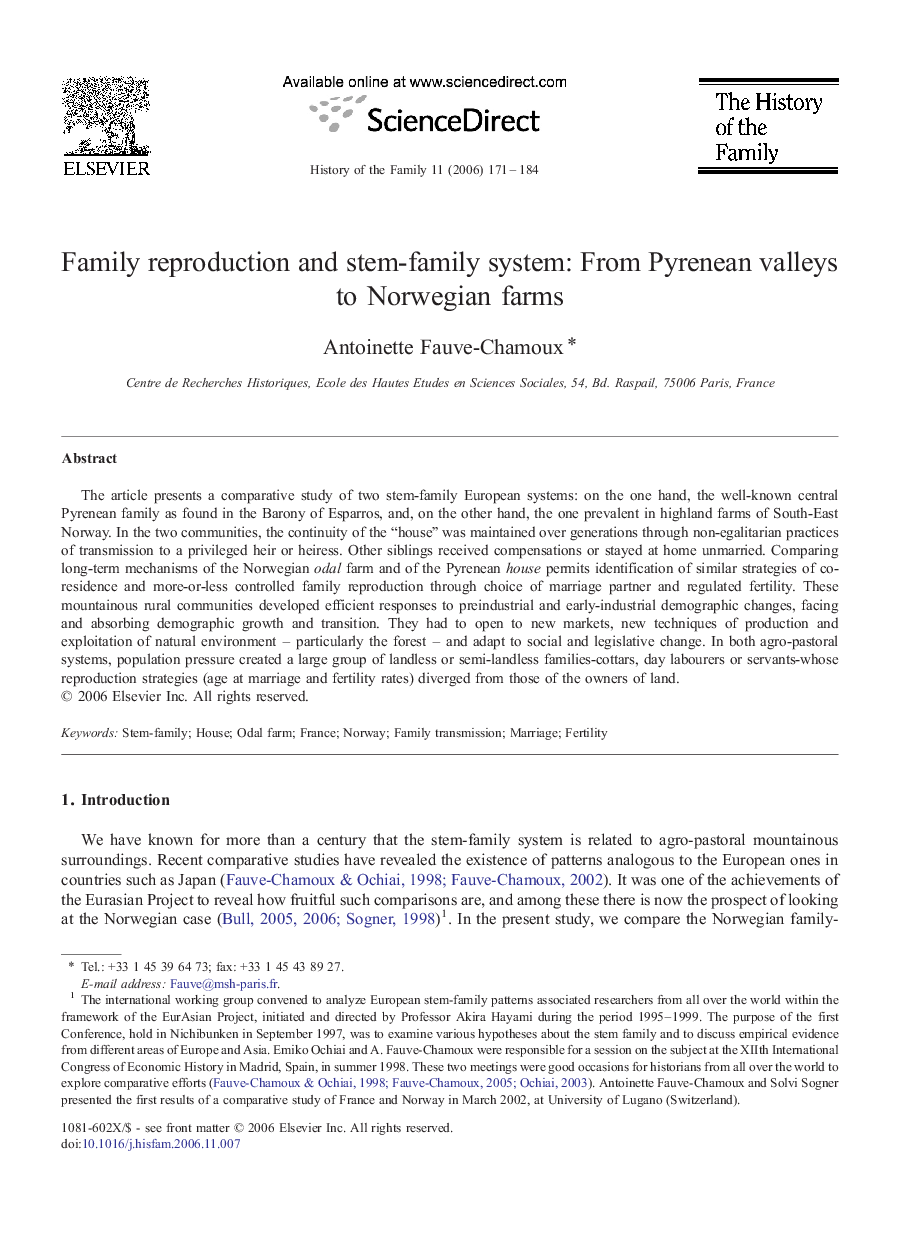| کد مقاله | کد نشریه | سال انتشار | مقاله انگلیسی | نسخه تمام متن |
|---|---|---|---|---|
| 1127140 | 1488657 | 2006 | 14 صفحه PDF | دانلود رایگان |
عنوان انگلیسی مقاله ISI
Family reproduction and stem-family system: From Pyrenean valleys to Norwegian farms
دانلود مقاله + سفارش ترجمه
دانلود مقاله ISI انگلیسی
رایگان برای ایرانیان
کلمات کلیدی
موضوعات مرتبط
علوم انسانی و اجتماعی
علوم انسانی و هنر
تاریخ
پیش نمایش صفحه اول مقاله

چکیده انگلیسی
The article presents a comparative study of two stem-family European systems: on the one hand, the well-known central Pyrenean family as found in the Barony of Esparros, and, on the other hand, the one prevalent in highland farms of South-East Norway. In the two communities, the continuity of the “house” was maintained over generations through non-egalitarian practices of transmission to a privileged heir or heiress. Other siblings received compensations or stayed at home unmarried. Comparing long-term mechanisms of the Norwegian odal farm and of the Pyrenean house permits identification of similar strategies of co-residence and more-or-less controlled family reproduction through choice of marriage partner and regulated fertility. These mountainous rural communities developed efficient responses to preindustrial and early-industrial demographic changes, facing and absorbing demographic growth and transition. They had to open to new markets, new techniques of production and exploitation of natural environment - particularly the forest - and adapt to social and legislative change. In both agro-pastoral systems, population pressure created a large group of landless or semi-landless families-cottars, day labourers or servants-whose reproduction strategies (age at marriage and fertility rates) diverged from those of the owners of land.
ناشر
Database: Elsevier - ScienceDirect (ساینس دایرکت)
Journal: The History of the Family - Volume 11, Issue 3, 2006, Pages 171-184
Journal: The History of the Family - Volume 11, Issue 3, 2006, Pages 171-184
نویسندگان
Antoinette Fauve-Chamoux,